
Healthchecks is a cron job monitoring service. It listens for HTTP requests and email messages (“pings”) from your cron jobs and scheduled tasks (“checks”). When a ping does not arrive on time, Healthchecks sends out alerts. Healthchecks comes with a web dashboard, API, 25+ integrations for delivering notifications, monthly email reports, WebAuthn 2FA support, team management features: projects, team members, read-only access. In this step by step guide I will show you how to install Healthchecks on your Synology NAS using Docker & Portainer.
STEP 1
Please Support My work by Making a Donation.
STEP 2
Install Portainer using my step by step guide. If you already have Portainer installed on your Synology NAS, skip this STEP. Attention: Make sure you have installed the latest Portainer version.
STEP 3
Make sure you have a synology.me Wildcard Certificate. Follow my guide to get a Wildcard Certificate. If you already have a synology.me Wildcard certificate, skip this STEP.
STEP 4
Go to Control Panel / Login Portal / Advanced Tab / click Reverse Proxy. Follow the instructions in the image below.
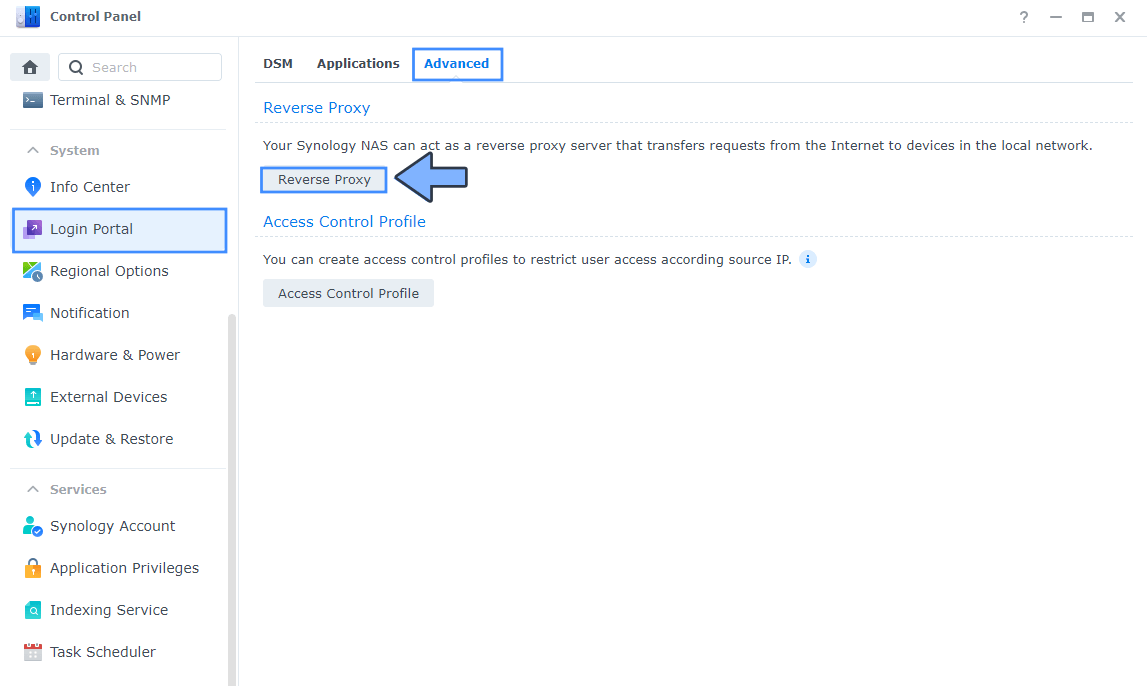
STEP 5
Now click the “Create” button. Follow the instructions in the image below.
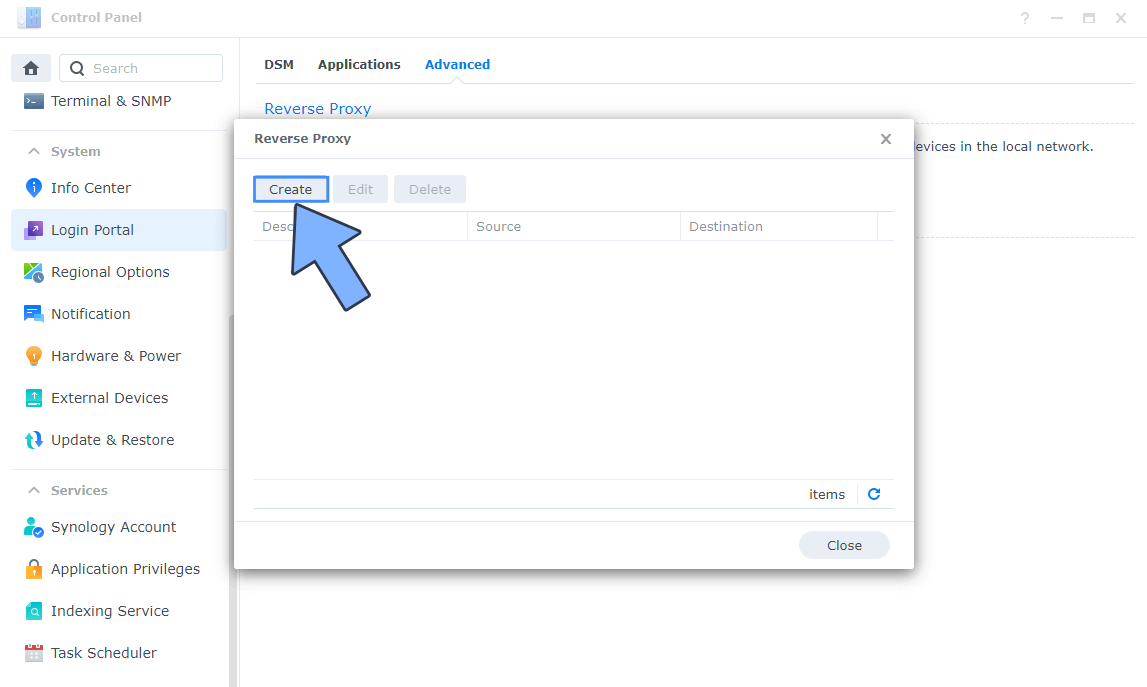
STEP 6
After you click the Create button, the window below will open. Follow the instructions in the image below.
On the General area, set the Reverse Proxy Name description: type in Healthchecks. After that, add the following instructions:
Source:
Protocol: HTTPS
Hostname: healthchecks.yourname.synology.me
Port: 443
Check Enable HSTS
Destination:
Protocol: HTTP
Hostname: localhost
Port: 8357

STEP 7
On the Reverse Proxy Rules click the Custom Header tab. Click Create and then, from the drop-down menu, click WebSocket. After you click on WebSocket, two Header Names and two Values will be automatically added. Click Save. Follow the instructions in the image below.

STEP 8
Go to Control Panel / Network / Connectivity tab/ Check Enable HTTP/2 then click Apply. Follow the instructions in the image below.
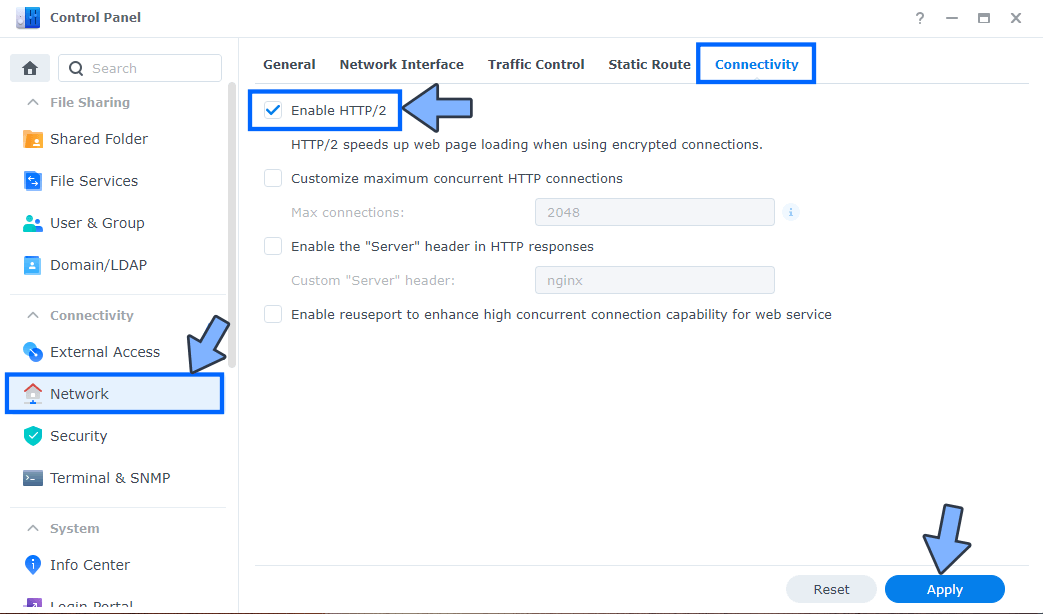
STEP 9
Go to Control Panel / Security / Advanced tab/ Check Enable HTTP Compression then click Apply. Follow the instructions in the image below.

STEP 10
Go to File Station and open the docker folder. Inside the docker folder, create one new folder and name it healthchecks. Follow the instructions in the image below.
Note: Be careful to enter only lowercase, not uppercase letters.
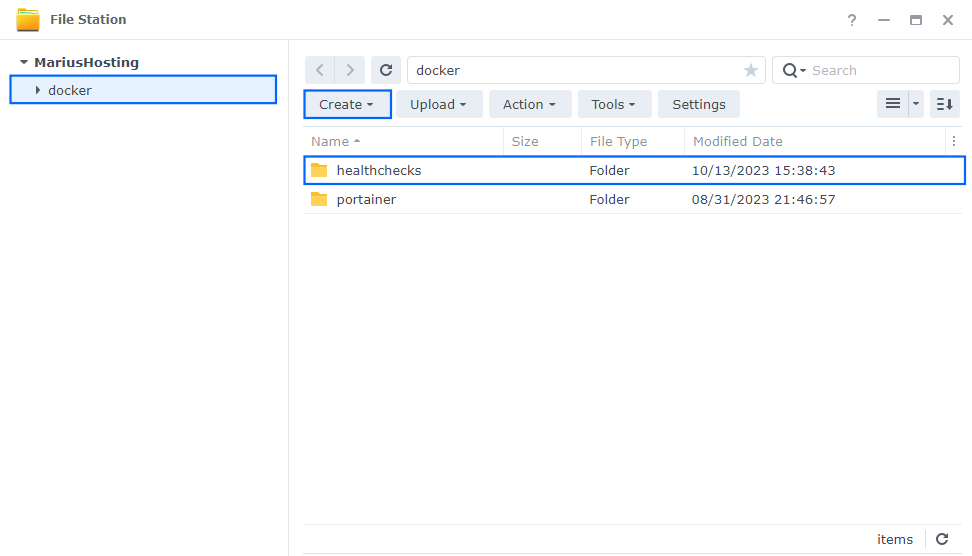
STEP 11
Now create two new folders inside the healthchecks folder that you created at STEP 10 and name them data and db. Follow the instructions in the image below.
Note: Be careful to enter only lowercase, not uppercase letters.

STEP 12
Follow my step by step guide on how to activate SMTP for your Gmail account. This step is mandatory. Note: If you don’t want to use the easiest way for SMTP with Google and you already have SMTP details from your own Mail Server, you can just skip this STEP and use your personalized email SMTP details instead.
STEP 13
Log into Portainer using your username and password. On the left sidebar in Portainer, click on Stacks then + Add stack. Follow the instructions in the image below.

STEP 14
In the Name field type in healthchecks. Follow the instructions in the image below.
services:
db:
image: postgres:16
container_name: Healthchecks-DB
hostname: healthchecks-db
mem_limit: 512m
cpu_shares: 768
security_opt:
- no-new-privileges:true
healthcheck:
test: ["CMD", "pg_isready", "-q", "-d", "healthchecks", "-U", "hcuser"]
timeout: 45s
interval: 10s
retries: 10
volumes:
- /volume1/docker/healthchecks/db:/var/lib/postgresql/data:rw
environment:
POSTGRES_DB: healthchecks
POSTGRES_USER: hcuser
POSTGRES_PASSWORD: hcpass
restart: on-failure:5
healthchecks:
image: healthchecks/healthchecks:latest
command: bash -c 'while !</dev/tcp/healthchecks-db/5432; do sleep 1; done; uwsgi /opt/healthchecks/docker/uwsgi.ini'
container_name: Healthchecks
hostname: healthchecks
mem_limit: 4g
cpu_shares: 768
security_opt:
- no-new-privileges:true
read_only: true
user: 1026:100
ports:
- 8357:8000
volumes:
- /volume1/docker/healthchecks/data:/data:rw
environment:
DB: postgres
DB_HOST: healthchecks-db
DB_PORT: 5432
DB_NAME: healthchecks
DB_USER: hcuser
DB_PASSWORD: hcpass
DEBUG: 'False'
REGISTRATION_OPEN: 'True'
SITE_NAME: mariushosting
SITE_ROOT: https://healthchecks.yourname.synology.me
SECRET_KEY: 76JNTas6KDh5H85UyrcJ
DEFAULT_FROM_EMAIL: Your-own-gmail-address
EMAIL_HOST: smtp.gmail.com
EMAIL_HOST_USER: Your-own-gmail-address
EMAIL_HOST_PASSWORD: Your-own-app-password
EMAIL_PORT: 587
EMAIL_USE_TLS: 'True'
EMAIL_USE_SSL: 'False'
EMAIL_USE_VERIFICATION: 'True'
restart: on-failure:5
depends_on:
db:
condition: service_healthy
Note: Before you paste the code above in the Web editor area below, change the value numbers for user with your own UID and GID values. (Follow my step by step guide on how to do this.) 1026 is my personal UID value and 100 is my personal GID value. You have to type in your own values.
Note: Before you paste the code above in the Web editor area below, change the value for SITE_NAME. Type in your own site name. mariushosting is an example for a site name.
Note: Before you paste the code above in the Web editor area below, change the value for SITE_ROOT and type in your own synology.me DDNS with https:// at the beginning that you have previously created at STEP 6.
Note: Before you paste the code above in the Web editor area below, change the value for DEFAULT_FROM_EMAIL and type in your own Gmail address. STEP 12.
Note: Before you paste the code above in the Web editor area below, change the value for EMAIL_HOST_USER and type in your own Gmail address. STEP 12.
Note: Before you paste the code above in the Web editor area below, change the value for EMAIL_HOST_PASSWORD and type in your own Gmail app password. STEP 12.
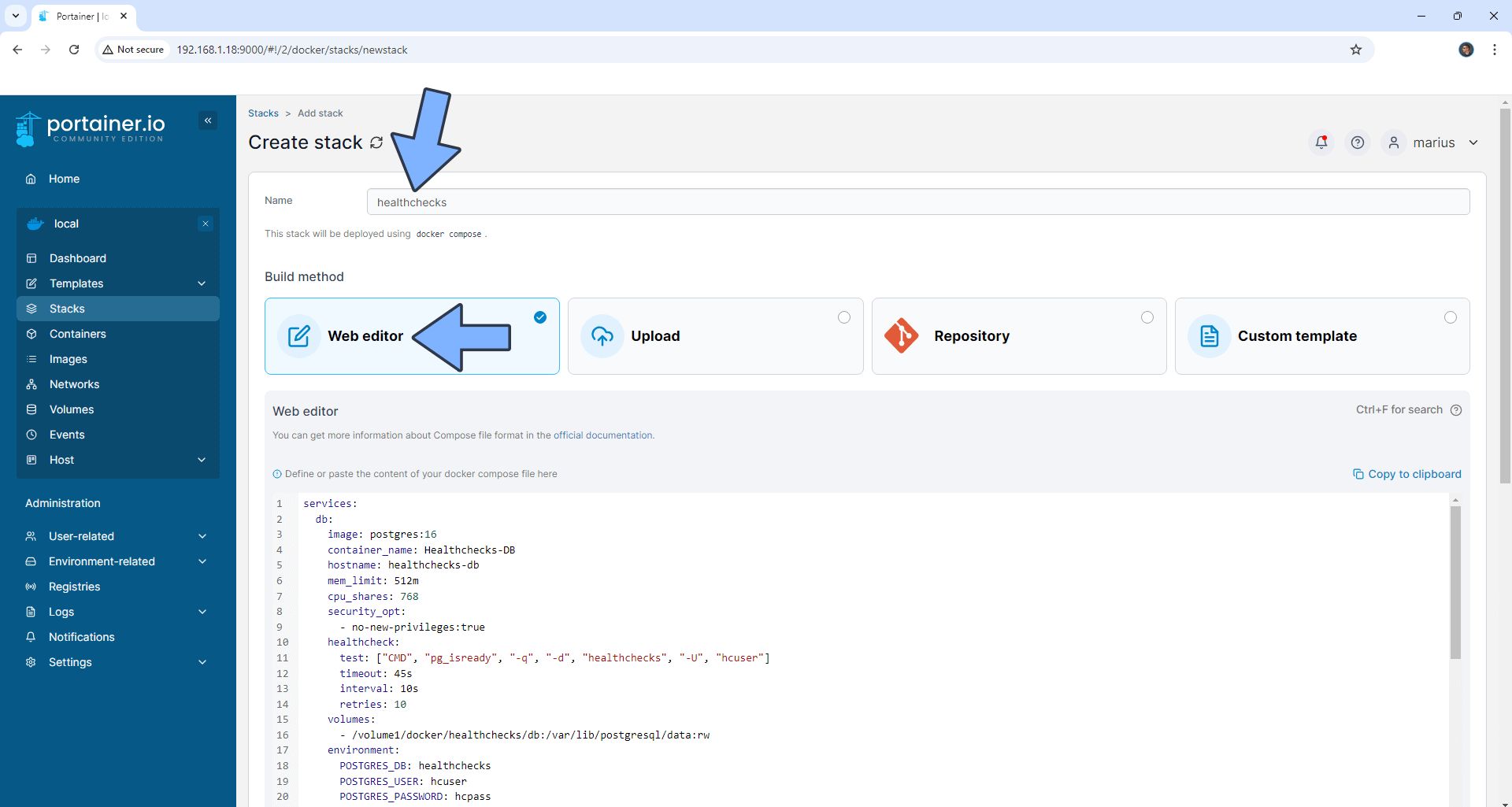
STEP 15
Scroll down on the page until you see a button named Deploy the stack. Click on it. Follow the instructions in the image below. The installation process can take up to a few minutes. It will depend on your Internet speed connection.
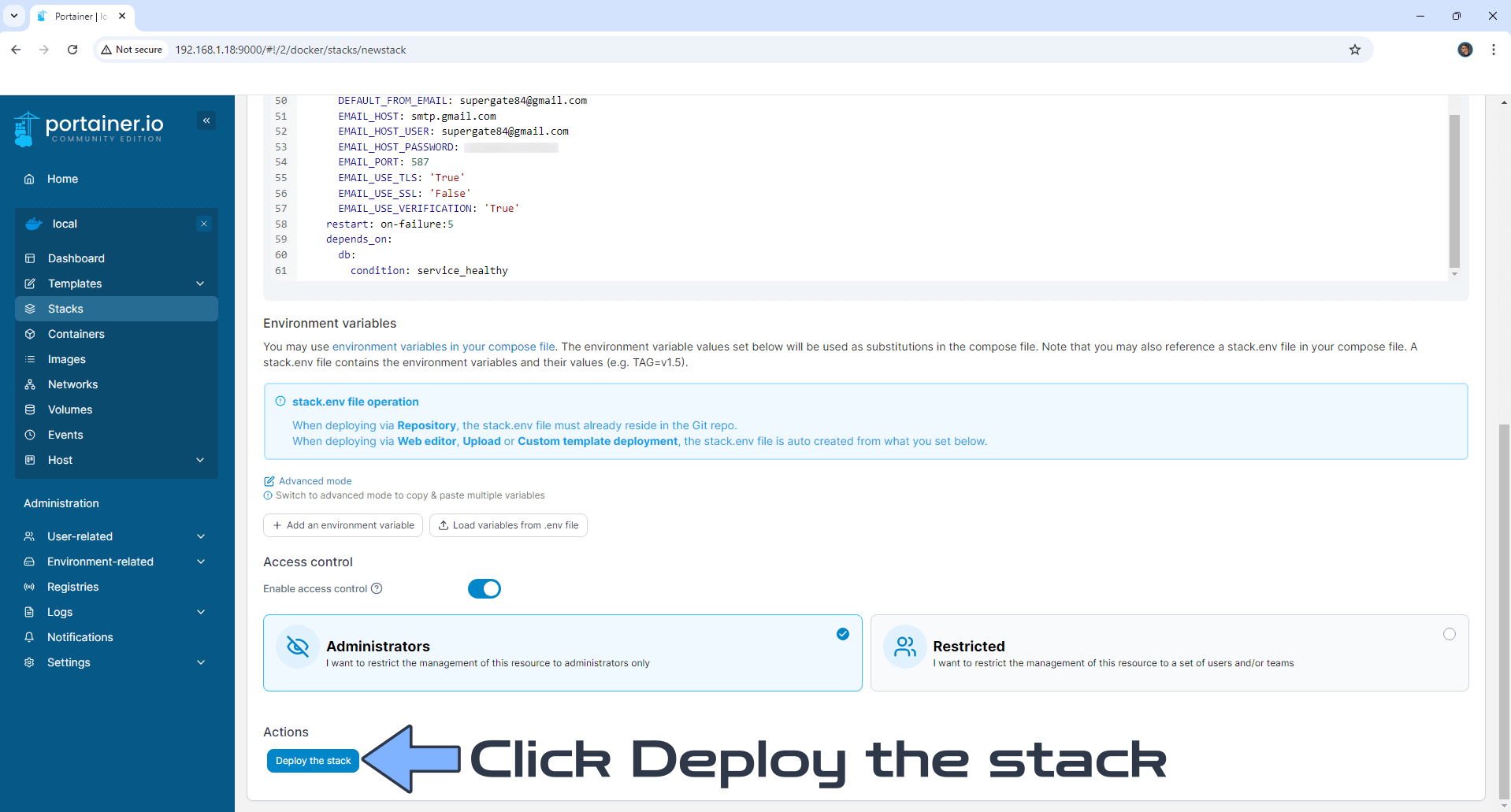
STEP 16
If everything goes right, you will see the following message at the top right of your screen: “Success Stack successfully deployed“.
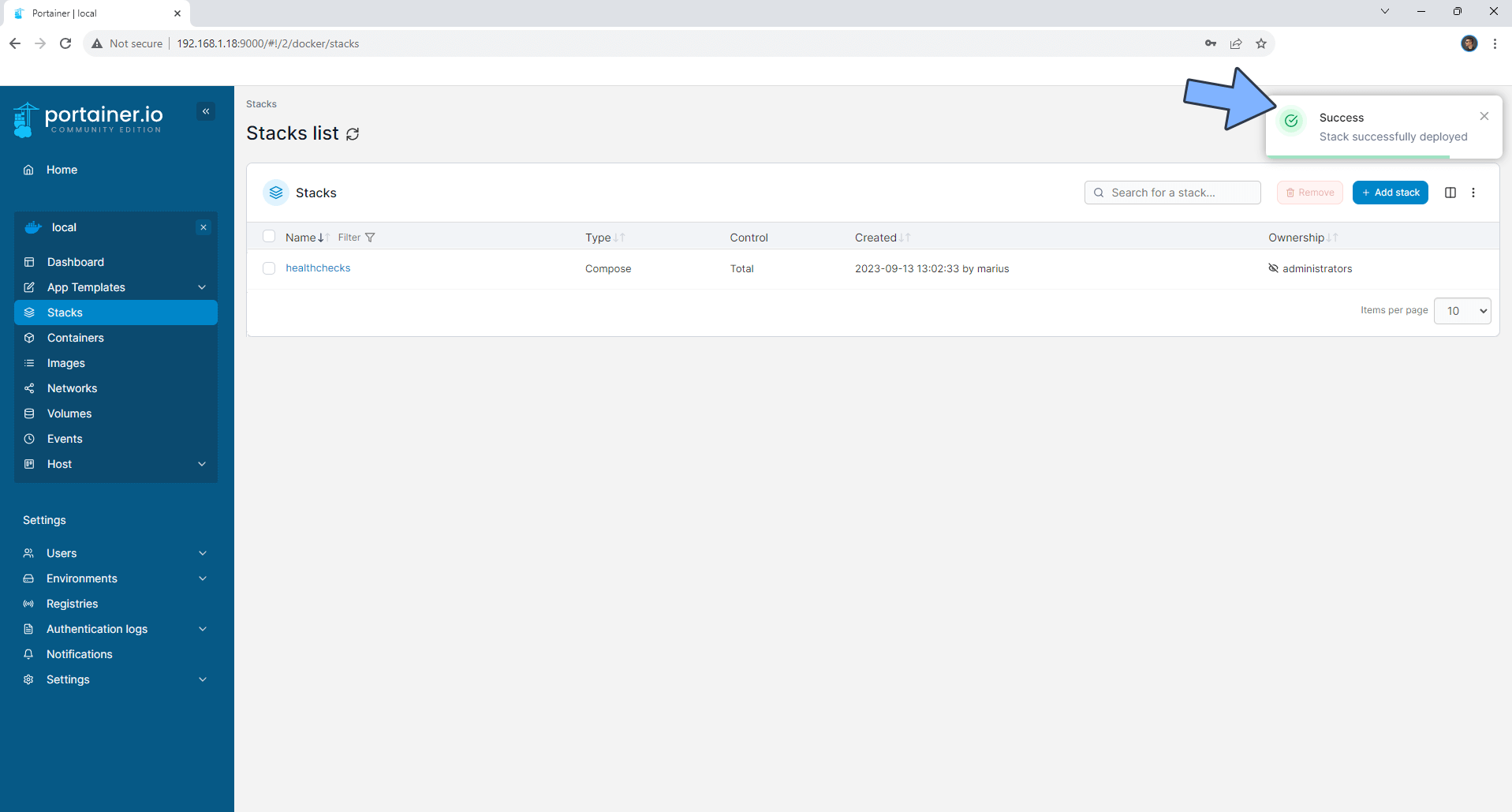
STEP 17
🟢Please Support My work by Making a Donation. Almost 99,9% of the people that install something using my guides forget to support my work, or just ignore STEP 1. I’ve been very honest about this aspect of my work since the beginning: I don’t run any ADS, I don’t require subscriptions, paid or otherwise, I don’t collect IPs, emails, and I don’t have any referral links from Amazon or other merchants. I also don’t have any POP-UPs or COOKIES. I have repeatedly been told over the years how much I have contributed to the community. It’s something I love doing and have been honest about my passion since the beginning. But I also Need The Community to Support me Back to be able to continue doing this work.
STEP 18
Now open your browser and type in your HTTPS/SSL certificate like this https://healthchecks.yourname.synology.me In my case it’s https://healthchecks.mariushosting.synology.me If everything goes right, you will see the Healthchecks login page. At the top right of the page, click Sign up. Follow the instructions in the image below.

STEP 19
Type in your own email address then click Email me a Link. Follow the instructions in the image below.
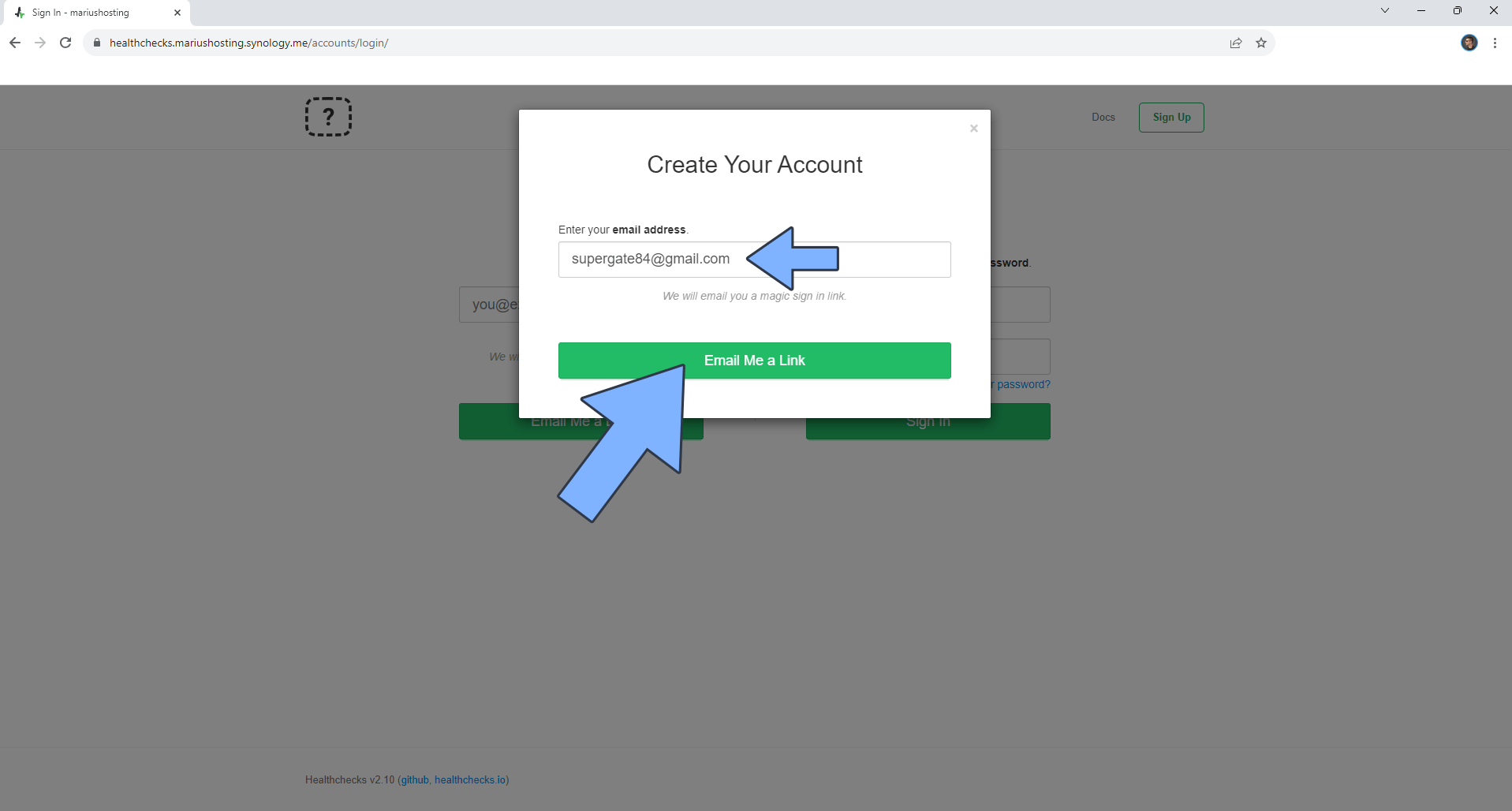
STEP 20
Check your email address to find the Healthchecks email. Open it, then click the green “Sign In” link. Follow the instructions in the image below.
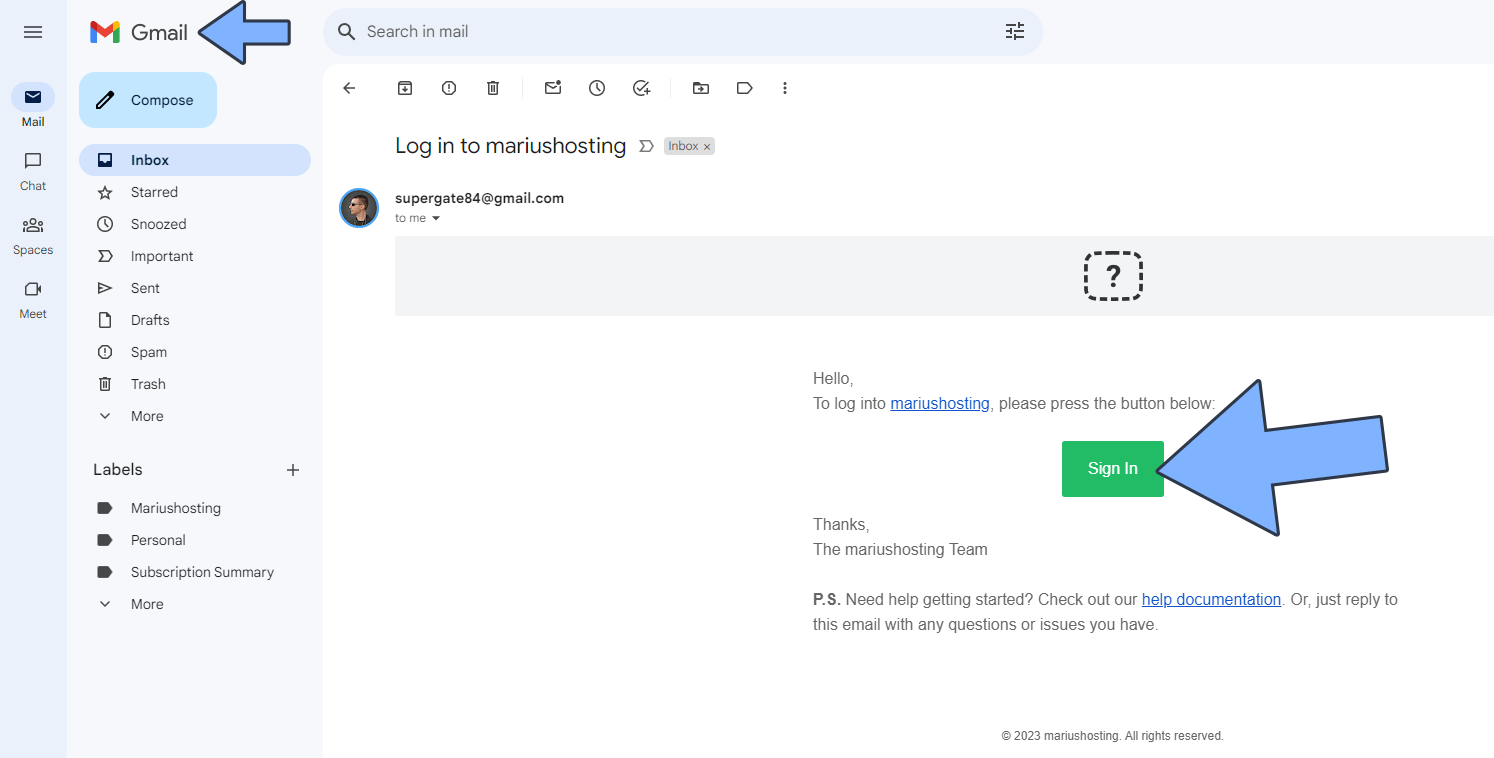
STEP 21
At the top right of the page, click Account, then Account Settings. Click Set Password to set a new password. Follow the instructions in the image below.
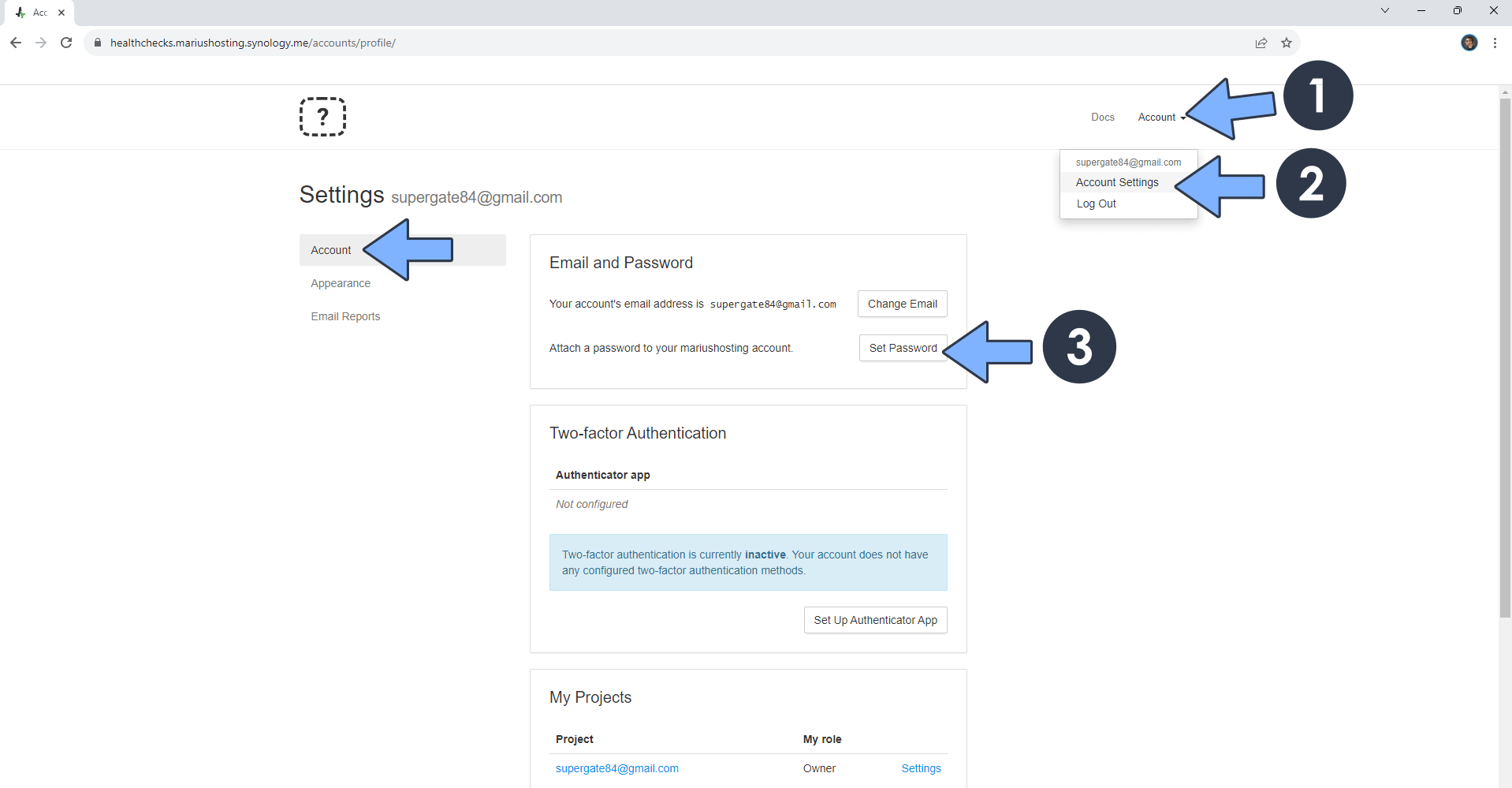
STEP 22
On the left sidebar click Appearance then Dark to set Dark mode. Follow the instructions in the image below.

STEP 23
If you want to disable user registration in Healthchecks, just change the following line in the compose at STEP 14:
REGISTRATION_OPEN: 'True'with the following one:
REGISTRATION_OPEN: 'False'Click update the stack to update the settings. From this point on, any user that will try to register a new account in Healthchecks will be rejected.
Enjoy Healthchecks!
If you encounter issues by using this container, make sure to check out the Common Docker issues article.
Note: Can I run Docker on my Synology NAS? See the supported models.
Note: How to Back Up Docker Containers on your Synology NAS.
Note: Find out how to update the Healthchecks container with the latest image.
Note: How to Free Disk Space on Your NAS if You Run Docker.
Note: How to Schedule Start & Stop For Docker Containers.
Note: How to Activate Email Notifications.
Note: How to Add Access Control Profile on Your NAS.
Note: How to Change Docker Containers Restart Policy.
Note: How to Use Docker Containers With VPN.
Note: Convert Docker Run Into Docker Compose.
Note: How to Clean Docker.
Note: How to Clean Docker Automatically.
Note: Best Practices When Using Docker and DDNS.
Note: Some Docker Containers Need WebSocket.
Note: Find out the Best NAS Models For Docker.
Note: Activate Gmail SMTP For Docker Container
This post was updated on Sunday / May 11th, 2025 at 11:21 PM
